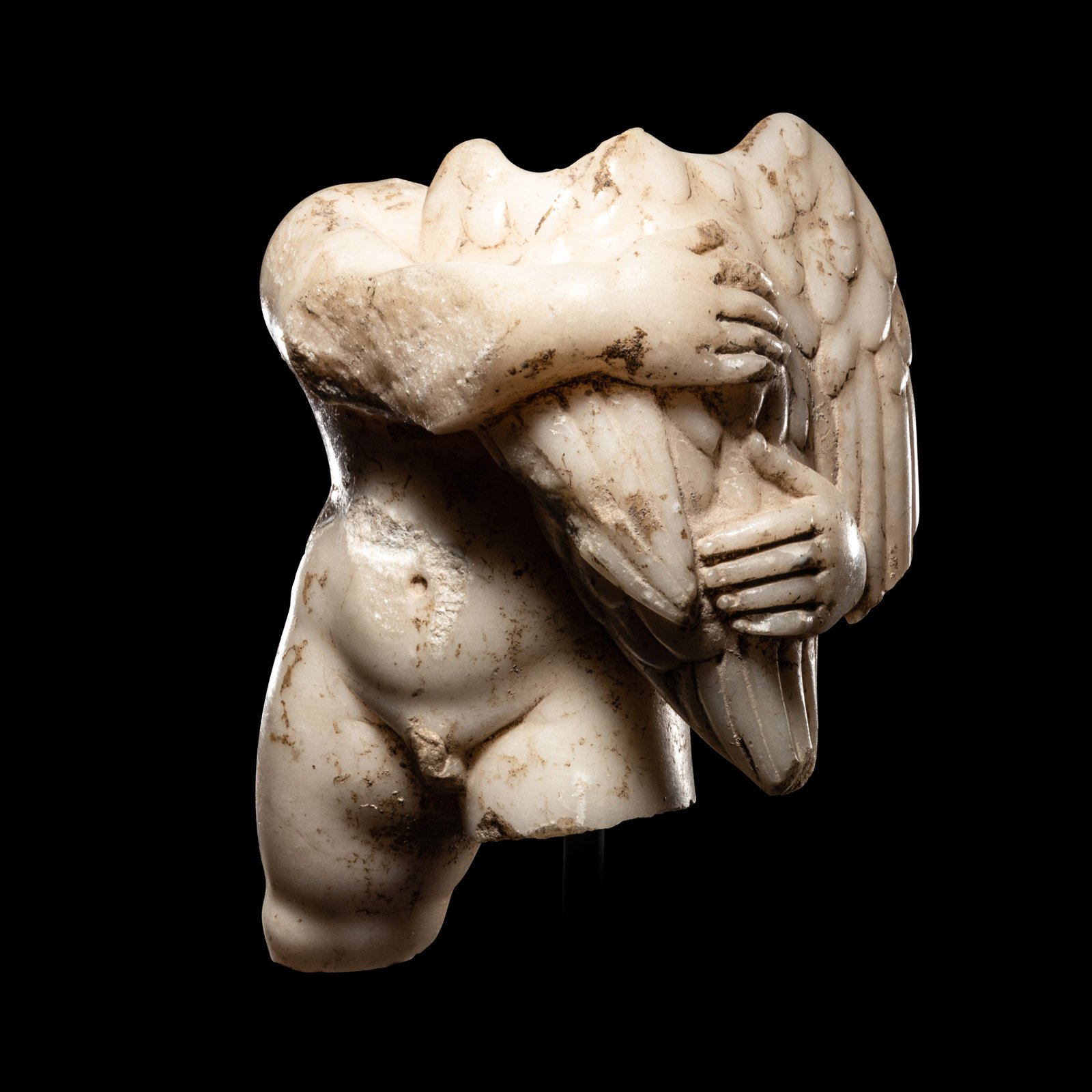Ancient Roman Large Glass Jug


Ancient Roman Large Glass Jug
Roman, 4th century A.D.
Glass
H: 24.0 cm – D: 8.3 cm
Serial: 1540
The jug was blown in a light green transparent glass; the intensity of the color depends on the thickness of the wall. The form of the vessel is elegant and well proportioned: the body, supported by a circular base which was attached after the blowing process, is in the shape of a pear, with a gradually sloping shoulder that ends into a long cylindrical neck. The mouth resembles a funnel, with the finely modeled lip. The ribbon handle that was applied to the shoulder raises vertically and is bent at an angle before curving back towards the lip. A coil of the same material is wound around the lip and another around the neck. A large part of the form repertoire of ancient glassworkers was designed for tableware use, in particular for transporting and serving water and wine at banquets. Jugs, one of the most frequently used containers, existed in various dimensions (the smaller examples would contain condiments, the largest ones beverages) and shapes: a spherical or more elongated body, a flat or higher, molded base, a trefoil-shaped or circular and elaborate mouth. Our example can certainly be dated to the Late Roman period because of the greenish hue of the glass, of the simple form of the base and especially of the presence of spiraling patterns in low relief which are clearly visible on the body, and that have appeared as an ornament in glasswork from the 4th century onward.
The replacement of terracotta by glass as a raw material for the manufacture of all types of containers is to be regarded as a major technological revolution in the Classical world: this shift, which occurred gradually between the late Hellenistic period and the first centuries of the Imperial times, was facilitated by the invention - probably in the Levantine - and widespread use of the blowpipe and of furnaces able to resist the temperatures needed for the melting of sands (transparent glass). With a versatility like no other known material in Roman times, abundant availability, lightness and ease of use, glass enabled the imitation of a wide range of other materials (especially precious metals), whether in the form, the design or the color. Furthermore, and the ancients had certainly noticed this fact, glass is a chemically neutral substance, what makes it particularly suitable for the storage of food, but also of cosmetics or pharmaceutical products.
CONDITION
Complete; covered with iridescence and some crust.
PROVENANCE
Acquired on the European art market, 1993
BIBLIOGRAPHY
ANTONARAS A., Fire and Sand, Ancient Glass in the Princeton University Art Museum, New Haven, London, 2012, pp. 170-171, nos. 244-245. WHITEHOUSE D., Roman Glass in the Corning Museum of Glass, vol. 2, New York, 1997, p. 180, no. 720








